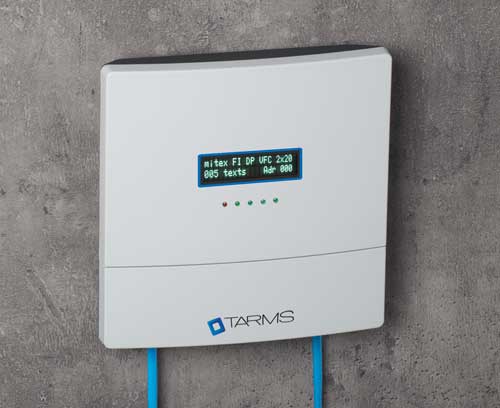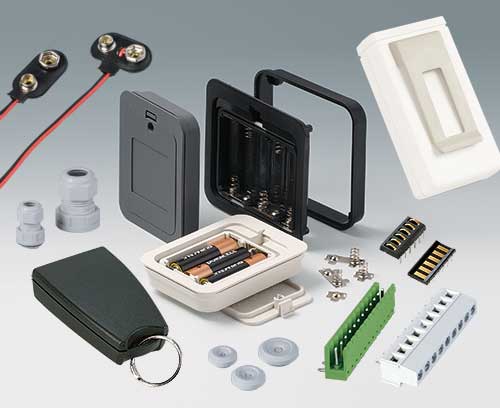 Accessori per contenitori
Accessori per contenitori
-
Prodotti
Prodotti Contenitori e manopole
Moderni contenitori in plastica, contenitori in allumino e manopole per i più diversi settori: contenitori per applicazioni portatili, a muro, da scrivania, per guida DIN, ecc. Convincetevi di persona!
 Contenitori in plastica Innovativi contenitori in plastica per l'industria elettrica ed elettronica
Contenitori in plastica Innovativi contenitori in plastica per l'industria elettrica ed elettronicaPer un design moderno degli apparecchi. Il nostro sito offre un panorama generale che vi permette di scegliere la soluzione più adatta dal nostro ampio assortimento.
 Contenitori in alluminio Contenitori di alta qualità in profilato di alluminio in un mix raffinato con materiale plastico
Contenitori in alluminio Contenitori di alta qualità in profilato di alluminio in un mix raffinato con materiale plasticoPer proteggere in modo affidabile i vostri dispositivi elettronici. Profilati di alluminio in lunghezze speciali su richiesta.
 Manopole Ampio programma di manopole: design ergonomico, classico e moderno
Manopole Ampio programma di manopole: design ergonomico, classico e modernoDi provata validità per potenziometri rotanti con estremità dell'albero arrotondate e appiattite secondo DIN 41591 ovvero di 6/4,6 mm.

-
Customizzazioni
Customizzazioni Vi forniamo i contenitori pronti per il montaggio in base alle vostre richieste ed esigenze
Non esitate a dirci cosa vi serve per il vostro prodotto perfettamente individuale. I nostri contenitori e le nostre manopole vengono quindi modificati e personalizzati in modo corrispondente. Qui trovate una panoramica delle nostre prestazioni.
 Lavorazione meccanica Realizziamo per voi lavorazioni individuali in modo rapido e affidabile
Lavorazione meccanica Realizziamo per voi lavorazioni individuali in modo rapido e affidabileFresatura di spazi / realizzazione di aperture per interfacce, display, elementi di comando nonché ingressi e uscite di cavi, fori filettati, incavi per pellicole ecc.
 Verniciatura Eseguiamo la verniciatura di contenitori e manopole per superfici di grande validità estetica e funzionale
Verniciatura Eseguiamo la verniciatura di contenitori e manopole per superfici di grande validità estetica e funzionalePotete scegliere i vostri colori aziendali o una vernice protettiva per requisiti speciali, per es. la vernice ESD.
 Stampa Eseguiamo la stampa serigrafica/a tampone e digitale di contenitori, placche frontali e manopole
Stampa Eseguiamo la stampa serigrafica/a tampone e digitale di contenitori, placche frontali e manopoleStampa di logo, testo e grafica nei colori desiderati.
 Marcatura laser La marcatura laser viene offerta per numerosi contenitori e componenti del programma standard
Marcatura laser La marcatura laser viene offerta per numerosi contenitori e componenti del programma standardPer la personalizzazione tramite scritte, indicazioni e marcature: logo, testo e grafica.
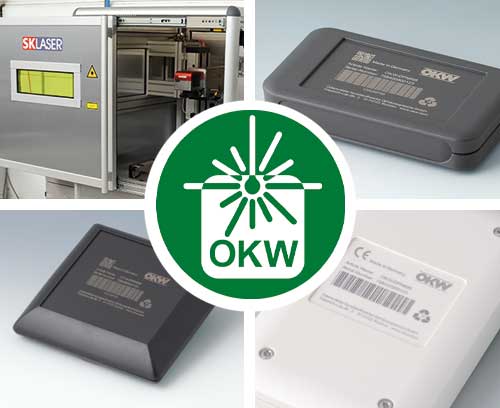 Pellicole decorative Eseguiamo la stampa digitale di pellicole decorative per scritte su contenitori in qualità fotografica
Pellicole decorative Eseguiamo la stampa digitale di pellicole decorative per scritte su contenitori in qualità fotograficaPellicole con/senza rilievo per funzioni dei tasti, finestre display/LED, codici a barre, ecc.
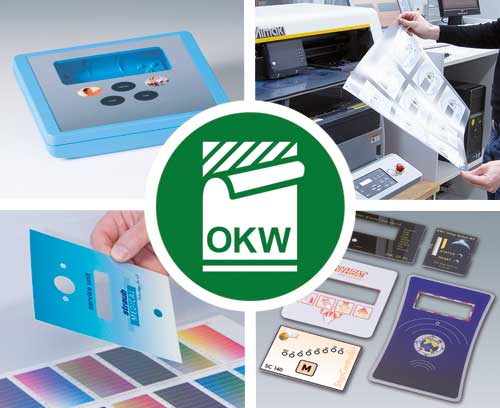 Materiale speciale Realizziamo i contenitori standard e le manopole in materiale plastico anche nei vostri colori
Materiale speciale Realizziamo i contenitori standard e le manopole in materiale plastico anche nei vostri coloriDefinizione individuale del colore in base a campione, RAL, Pantone ecc.
 Protezione CEM In numerosi contenitori in materiale plastico applichiamo un rivestimento interno a protezione dalle radiazioni elettromagnetiche
Protezione CEM In numerosi contenitori in materiale plastico applichiamo un rivestimento interno a protezione dalle radiazioni elettromagneticheSicurezza e affidabilità grazie a CEM in base alle applicazioni.
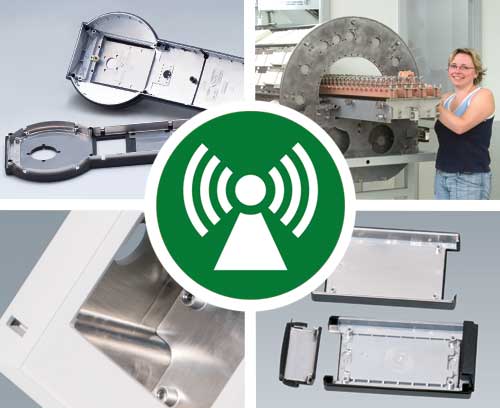 Confezionamento / montaggio Eseguiamo lavori di montaggio per il completamento di gruppi ovvero apparecchi
Confezionamento / montaggio Eseguiamo lavori di montaggio per il completamento di gruppi ovvero apparecchiMontaggio di accessori per contenitori, incollaggio di pellicole decorative e lastre per display, assemblaggio di gruppi, montaggio personalizzato dei componenti con supporti distanziali, punti di fissaggio, ecc.
 Soluzioni dei nostri partner Cooperiamo con partner dalle prestazioni convincenti
Soluzioni dei nostri partner Cooperiamo con partner dalle prestazioni convincentiGrazie alle cooperazioni in fatto di sistemi di immissione e di alimentazione di energia/corrente siamo in grado di offrirvi contenitori su misura come soluzioni complete.

-
Applicazioni
- Medicina / Laboratorio / Wellness
- Metrologia / Tecnica di regolazione / Automazione
- Costruzioni meccaniche / Impiantistica
- Tecnologia dei veicoli / Macchine edili / Settore militare / Aeronautica
- Riscaldamento / Condizionamento / Ambiente
- Tecnica di sicurezza / Gestione di impianti tecnici di edifici
- Comunicazione
- Industria mineraria / Gas / Petrolio
Applicazioni Profondo know-how in fatto di applicazioniGli esempi di applicazioni dei clienti mostrano le svariate possibilità per l'impiego dei nostri contenitori e delle nostre manopole. Scegliete il campo di impiego per il quale desiderate ulteriori informazioni.
 Medicina / Laboratorio / Wellness Uomo ed ergonomia
Medicina / Laboratorio / Wellness Uomo ed ergonomiaOKW mira a soluzioni innovative e di alta qualità dalle forme ergonomiche che infondono fiducia.
 Metrologia / Tecnica di regolazione / Automazione Uomo e precisione
Metrologia / Tecnica di regolazione / Automazione Uomo e precisioneLe soluzioni di OKW garantiscono un alto livello di comfort di comando e di sicurezza nell'uso quotidiano.
 Costruzioni meccaniche / Impiantistica Uomo e produzione
Costruzioni meccaniche / Impiantistica Uomo e produzioneLe soluzioni di OKW permettono facilità di comando e di lettura e si distinguono per la grande affidabilità.
 Tecnologia dei veicoli / Macchine edili / Settore militare / Aeronautica Uomo e mobilità
Tecnologia dei veicoli / Macchine edili / Settore militare / Aeronautica Uomo e mobilitàI contenitori e le manopole di OKW resistono anche alle sollecitazioni più intense grazie alla struttura robusta e ai materiali di alta qualità utilizzati.
 Riscaldamento / Condizionamento / Ambiente Uomo ed efficienza
Riscaldamento / Condizionamento / Ambiente Uomo ed efficienzaOKW sviluppa soluzioni in base alle esigenze in modo che i loro utilizzatori possano sfruttarle a lungo.
 Tecnica di sicurezza / Gestione di impianti tecnici di edifici Uomo e tecnica
Tecnica di sicurezza / Gestione di impianti tecnici di edifici Uomo e tecnicaOKW ha un ruolo di pioniere nello sviluppo delle soluzioni più moderne per sostenere il progresso delle tecnologie smart.
 Comunicazione Uomo ed informazione
Comunicazione Uomo ed informazioneOKW pone nuove pietre miliari per permettervi di strutturare in modo ottimale i vostri processi di informazione e di comunicazione.
 Industria mineraria / Gas / Petrolio Uomo e materie prime
Industria mineraria / Gas / Petrolio Uomo e materie primeAmbienti difficili - OKW ha le soluzioni per un elevato standard di qualità a protezione dei vostri componenti elettronici.

-
News
News
Novità di OKW
Scoprite i nuovi prodotti e le innovazioni di OKW e leggete i comunicati stampa attuali dell'azienda.
 NewsComunicati stampa
NewsComunicati stampaPer essere aggiornati
Qui sono disponibili i comunicati e le immagini per la stampa.
 Fiere ed esposizioni
Fiere ed esposizioniIncontri sul posto
Calendario attuale di fiere e manifestazioni internazionali a cui partecipano OKW e i partner di distribuzione. Appuntamenti da non perdere!

-
Informazioni
Come posso ricevere un campione o un'offerta?Con il simbolo del carrello potete inserire prodotti nel carrello e poi richiedere un campione e/o un'offerta. Per ulteriori informazioni si veda qui.
 Informazioni specifiche direttamente dagli esperti
Informazioni specifiche direttamente dagli espertiSpiegazioni dettagliate sulla scelta dei materiali, sugli standard internazionali come per es. i gradi di protezione, i test di infiammabilità, le direttive in materia ambientale ecc.
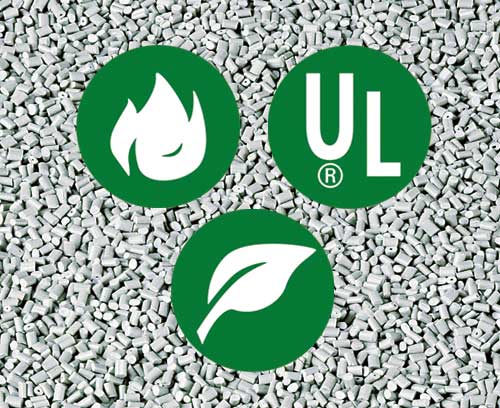 Istruzioni di montaggio, certificati, rivista clienti INSIDE e pubblicazioni di stampa specializzata
Istruzioni di montaggio, certificati, rivista clienti INSIDE e pubblicazioni di stampa specializzataQui potete scaricare le informazioni desiderate.
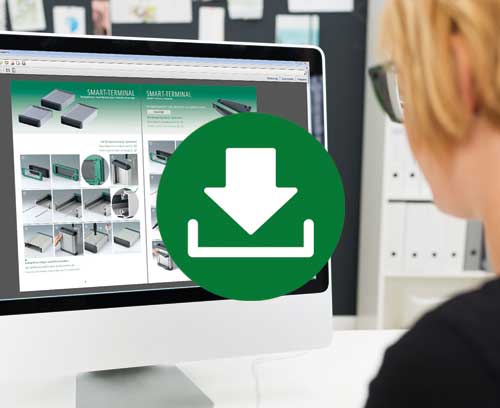 PDF e AutoCAD DWF
PDF e AutoCAD DWFAvvertenze di utilizzo e link ai siti dei produttori per scaricare i programmi di visualizzazione.

-
Società
Tradizione e modernitàOKW Gehäusesysteme è un'azienda tedesca con sede a Buchen/Odenwald. Una breve sintesi dei fatti più importanti sulla nostra attività, sulla nostra gamma di prodotti e sulla storia della nostra azienda.
 Filiale OKW Svizzera
Filiale OKW SvizzeraOkatronic AG è l'affiliata svizzera di OKW Gehäusesysteme di Buchen in Germania. La nostra ditta è stata fondata a Härkingen nel 1996.
 OKW nel mondo
OKW nel mondoPer trovare i partner di OKW a cui rivolgersi nelle rispettive zone.
Affiliate presenti in 8 paesi in 4 continenti e partner di distribuzione pluriennali in tutto il mondo sono a vostra disposizione sul posto.
 Assumere responsabilità
Assumere responsabilitàI nostri prodotti rispondono ai requisiti delle direttive e dei regolamenti in materia ambientale come REACH, RoHS, WEEE ecc.
 La tutela dei vostri dati personali è importante per noi e desideriamo che vi sentiate sicuri quando visitate il nostro sito web.
La tutela dei vostri dati personali è importante per noi e desideriamo che vi sentiate sicuri quando visitate il nostro sito web.Ecco una breve panoramica sul tema della tutela dei dai.
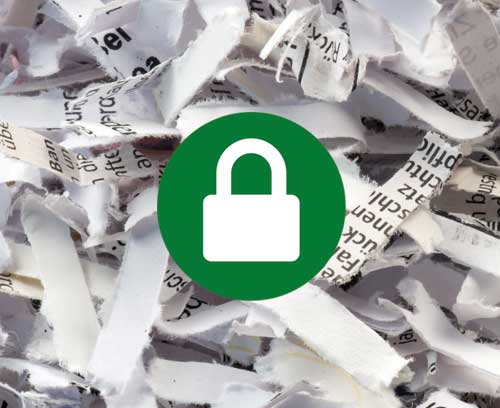 Note legali
Note legaliNote legali di Odenwälder Kunststoffwerke Gehäusesysteme GmbH a Buchen.

-
Contatto
Contattarci è facilissimoLa vostra e-mail viene inoltrata direttamente all'indirizzo competente per la relativa regione.
In alternativa potete anche compilare la lista dei desideri e inviare una richiesta utilizzando il simbolo del "Carrello".


